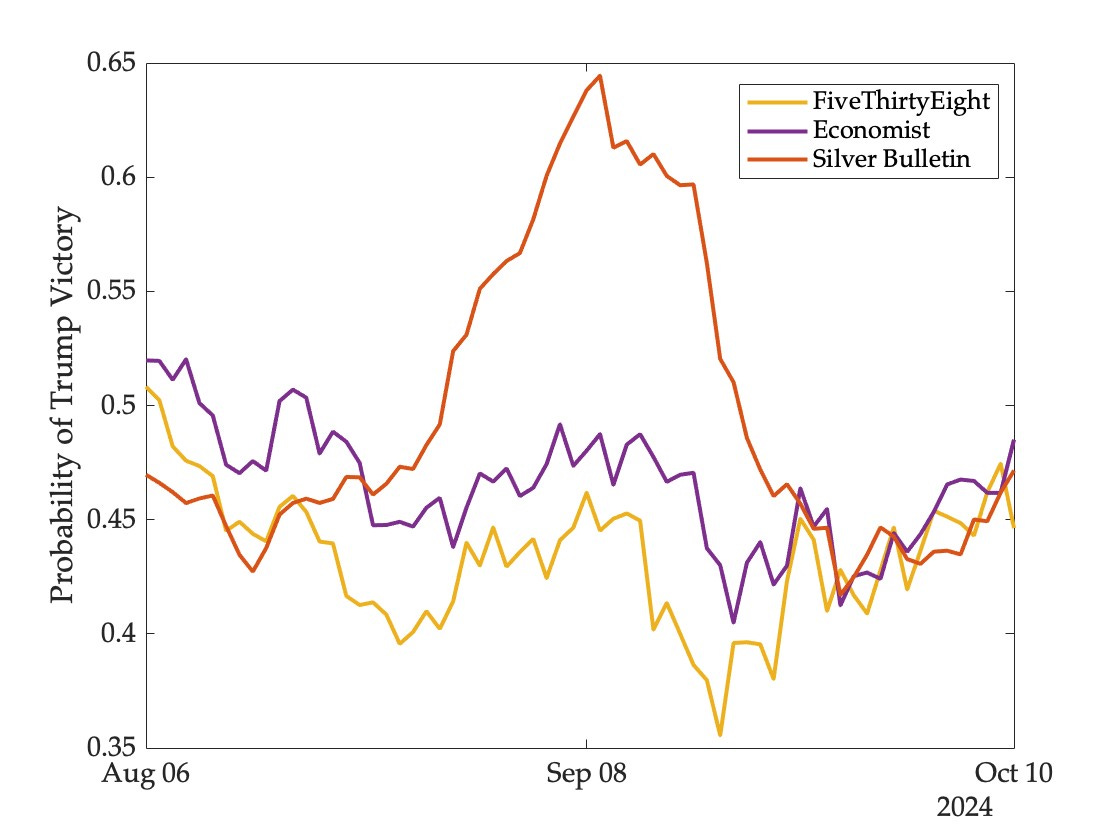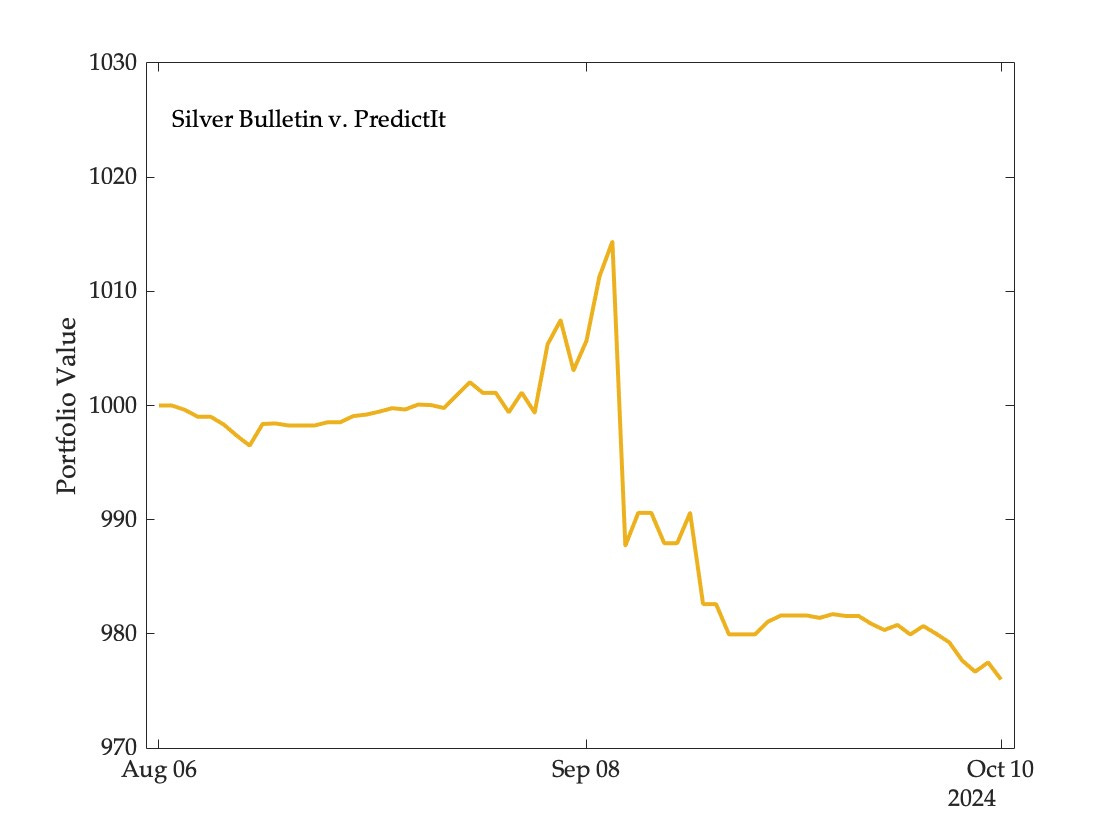Forecasting Mechanisms: An Update
At around 3:30pm on Election Day in 2012, I noticed something unusual on Intrade. Someone had placed large orders to buy Romney contracts at prices from 30¢ on down, effectively putting a floor on the price of this contract and resulting in a very asymmetric order book:
The order book for Obama contracts was similarly asymmetric, except that there was a ceiling at 70¢ that was difficult for the market to breach.
This kind of behavior is puzzling because placing such large resting orders when information is arriving thick and fast is extremely risky. This is the problem of adverse selection routinely confronted by liquidity providers in financial markets. For example, a leaked exit poll showing Obama winning Florida or Ohio (both of which he did end up winning) would lead other traders to pick off these resting orders and inflict significant losses on the individual who had placed them. So the placement of these orders appears to make no sense.
Unless, of course, maintaining a floor on the contract price was the point of the exercise. Perhaps the trader was willing to incur large losses to limit the spread of pessimism about Romney’s prospects while polls were still open, hoping to prevent a collapse of turnout among supporters. Losses of this scale would be a drop in the bucket in any case, compared with the costs of a modern presidential campaign.
David Rothschild and I subsequently examined (anonymized) transaction-level data from the exchange and discovered that this one account was responsible for almost seven million dollars bet on Romney to win, and was a party to about 23,000 separate transactions over two years leading up to election day. One-third of total trading volume during the last three weeks before the election involved this account.
While the goal of our work was to understand how different trading strategies interact to determine prices in a complex system, media attention was understandably focused on this one trader.
In my last post I described an account on Polymarket that has been using a virtually identical approach—placing large limit orders that effectively set a temporary floor on the price of Trump contracts across multiple markets. This led to a sharp rise in prices of contracts referencing a Trump victory on the morning of October 7. By October 9, the account had about $8.4 million at risk overall and held close to 11 million contracts in the headline election market. This has now risen to about $10.4 million at risk and 14 million shares held.
In the post I suggested three different possible motivations for this activity—an interpretation of public information that differs from that reflected in market prices, a desire to move the market to influence public perceptions of momentum, and access to material inside information (such as internal polling) that might be expected to move prices when made public. I argued that the last of these possibilities would lead statistical models to move in the direction of Polymarket in due course.
There has been a bit of such movement over the past few days:
The movements are small and the evidence is hardly decisive, but the price increases on Polymarket have been sustained and the large bettor’s portfolio has gained value.
How does this affect the evaluation of forecasting accuracy based on the profitability test? Interestingly, the general picture has not changed much—PredictIt remains the hardest market to beat and FiveThirtyEight is still the most profitable model:
Silver Bulletin’s long excursion into Trump territory based on a questionable convention bounce adjustment resulted in losses from which it has not recovered, since the model started to accumulate Harris contracts at just the wrong moment. Here are the beliefs and trading behavior of the bot representing this model:
And here is the evolution of the value of the resulting portfolio:
There’s much more to see on some slides I’ve prepared for a conference this coming Tuesday. All these results are tentative of course, and I’ll post updates from time to time.
Note to Readers: I’ve activated paid subscriptions in case you’d like to contribute to this effort but please note that all posts (including the archive, imported from other platforms and dating back twenty years) will continue to be available free of charge to all subscribers. Once the election is over, I’d like to get back to posting on a broader range of issues, including free expression, patriotism, identity, crime, policing, meritocracy, and the interpretation of signals. But I can’t promise to post frequently, so upgrade only if that really doesn’t matter to you and you can comfortably afford it.






